Herbs give flavor to your food. People think that it is very difficult to grow herbs at home. It is a misconception because without any extra hard work and experience you can grow different herbs.
You have to just understand the plant’s requirements and make sure to provide all the things they need for their development. These herbs make your life easier whenever you need herbs just clip some of the sprigs and your work is done.
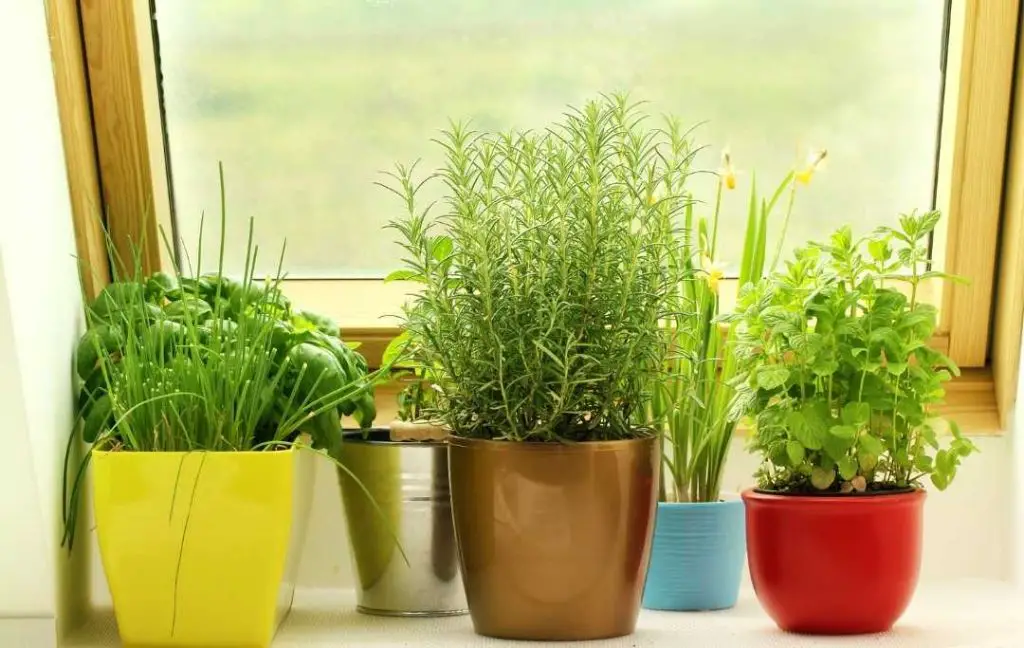
Homegrown herbs not only provide kitchen supply but also fill your home with a marvelous aroma. In this article, you will find everything about herbs like tips, instructions, and care.
1- CHOOSE THE RIGHT HERBS
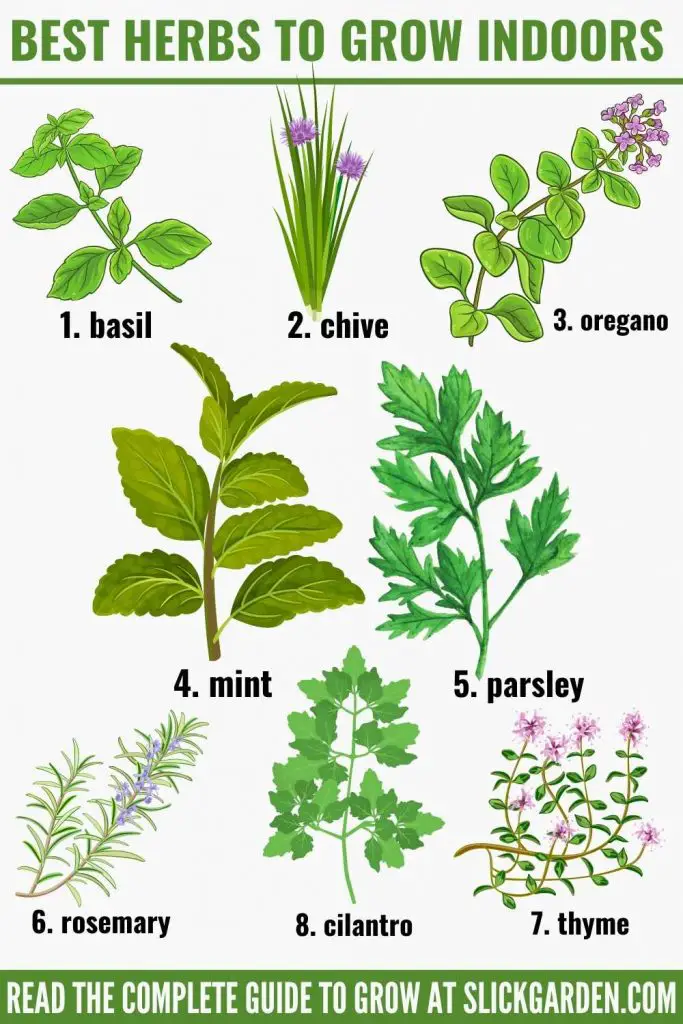
The easy to grow herbs are basil, chive, oregano, mint, parsley, rosemary, cilantro, and thyme can be grown from seeds for cuttings. Most of the herbs can easily grow from their cuttings, for example, basil and mint.
Cutting is a branch of a plant that you cut with the sharp scissors at the node of the desired plant which can grow from the cutting and soaked in water until the new roots of the cutting sprouts.
You just have to put the root of these into a glass of water. Some herbs which are basil, cilantro, and chervil grow from the seeds.
Now we will discuss some Herbs one by one so you can easily decide which Herbs you can grow indoors.
A. Basil
You can easily grow basil indoors, pinch off some leaves from your homegrown basil plant and add to your salad, sandwiches, and sauce. Sow the seeds of basil or you can purchase small plants. Potting them in a rich potting mix, heat, and bright light is a basic requirement of basil.
B. MINT
Mint has a great aroma, we use it in different sauces and dishes. This is an attractive house plant as its fragment is very good. You should keep its soil moist and make sure of the availability of light.
C. OREGANO
It is a member of the mint family and can be used in tomato sauces, meat, casseroles, soups, and stews. Its dry leaves are more pungent than fresh ones.
You can grow oregano like mint. When you see the surface of the soil is dry then water it and choose the best location for proper sunlight.
D. PARSLEY
Parsley is a good addition to your kitchen garden if you try to grow it. Parsley will change the flavor of your dishes like soup salad and fresh sauces.
You should grow parsley in the pot with a rich and organic potting mix, it needs full and strong light.
E. ROSEMARY
The needle leaves of rosemary increase the flavored tomato and cream sauces. Rosemary can tolerate hot sunny and dry weather. It can grow in summer but prefers low temperature which is between 40°F to 65°F. It grows well in the presence of sunlight.
F. THYME
The tiny leaves of this herb is a good option for indoor planting. Fast-draining soil mix is good for the potting of thyme.
It likes warm temperatures so choose the location in your house where it gets full sunlight. Don’t let the soil of thyme dry. Check with your finger if it needs water then water it.
2- SELECT THE BEST HERB POTS FOR INDOOR HERBS
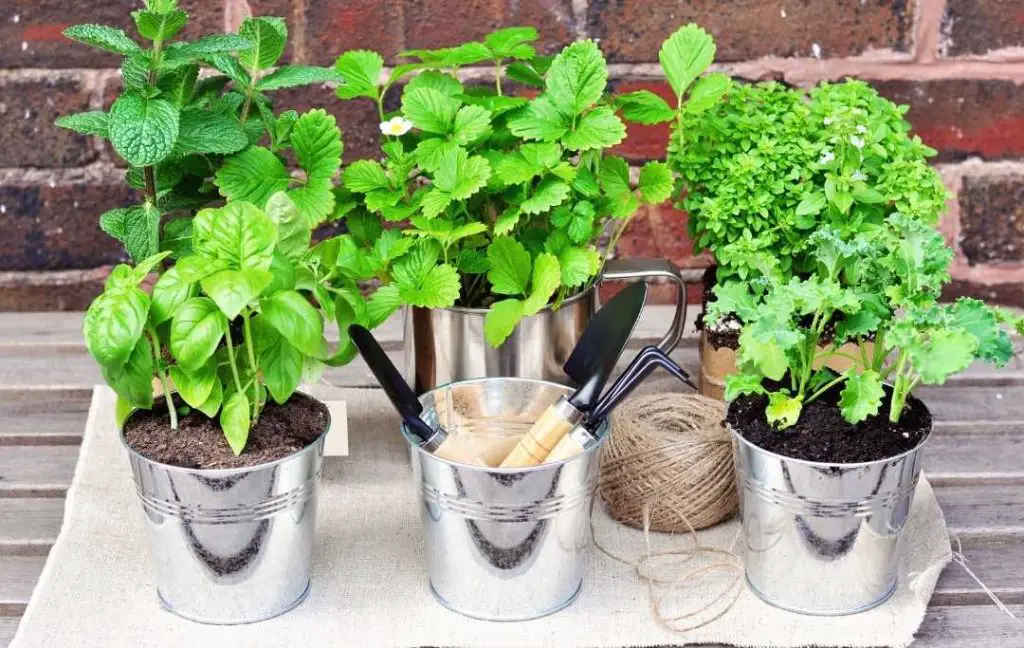
It is very important for your herbs to select the best pot. Your container or pot should have the following qualities.
DRAINAGE: The pots you select for your herbs should have adequate drainage holes, drainage is the most important consideration while growing indoor herbs.
It is important to know that herbs don’t like to grow in standing water. If your pot has drainage ability so it will drain the water out of the pot.
SAUCERS: You should use a saucer for every pot in which you are growing herbs indoors. Without a saucer, the table on which you keep the pot will be damaged or it can create a mess.
There are a variety of pots available in the market which have a saucer attached. Another option is that you can buy plastic plant saucers from the market. You can also use decorative trays for this purpose.
SIZE: The correct size of your pot is also an important consideration when you are selecting your pot for your indoor herbs. if some plant has long roots so you need a deep pot, for example, basil.
According to the size of the plants, choose your pot if the roots of the plant are very small and you choose a big pot that is not possible for the pot to keep the soil moist.
MATERIALS: First, check the humidity of your house, and after that decide what type of material of pot you need for your plant. The material of the pot has the ability to control the moisture of the soil.
For example, ceramic has the ability to hold water while clay can dry it faster. If you are living in a dry environment then use a ceramic pot instead of clay or porous pots.
DESIGN: With the help of design, you can decorate your kitchen or any place where you are growing your herbs. Traditional pots are good but you can turn them unique by using your creativity.
GROW EACH HERB IN A SEPARATE POT: It is a good practice to grow multiple herbs if you are growing them in a raised bed and in your garden. But when we talk about the pots they are small and you can’t grow multiple herbs in one pot or container.
Multiple herbs in a single container need perfect condition and it is harder to create a perfect environment for them. So it is better to grow than separately in separate pots.
Related Article
3- PROVIDE STRONG LIGHT FOR YOUR INDOOR HERB GARDEN
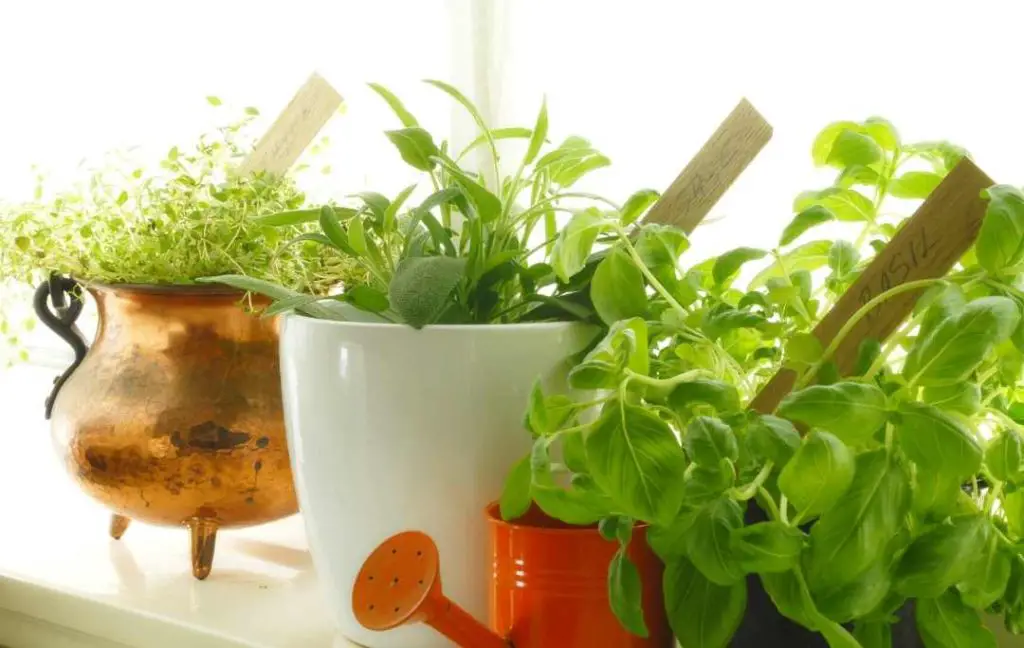
You know that light is an important factor in the growth of any plant. It is a difficult task to provide adequate sunlight for indoor plants if your herbs get proper light then the flavor of your herbs will increase and the taste you get from them is amazing.
Herbs need 6 to 8 hours of direct sunlight so you should place them on a sunny windowsill or room where they get proper sun exposure.
If you don’t have a proper location for your herbs then you can arrange artificial light sources. In different garden centers, you can get small grow light setups that help you to solve the problem of light which you are facing for your plants.
You can also use full-spectrum grow lights, place your plants within a foot of the bulbs. In this way, your plant will be able to get 12 to 16 hours of light in a day.
4- SELECT THE BEST INDOOR POTTING MIX OR SOIL FOR HERBS
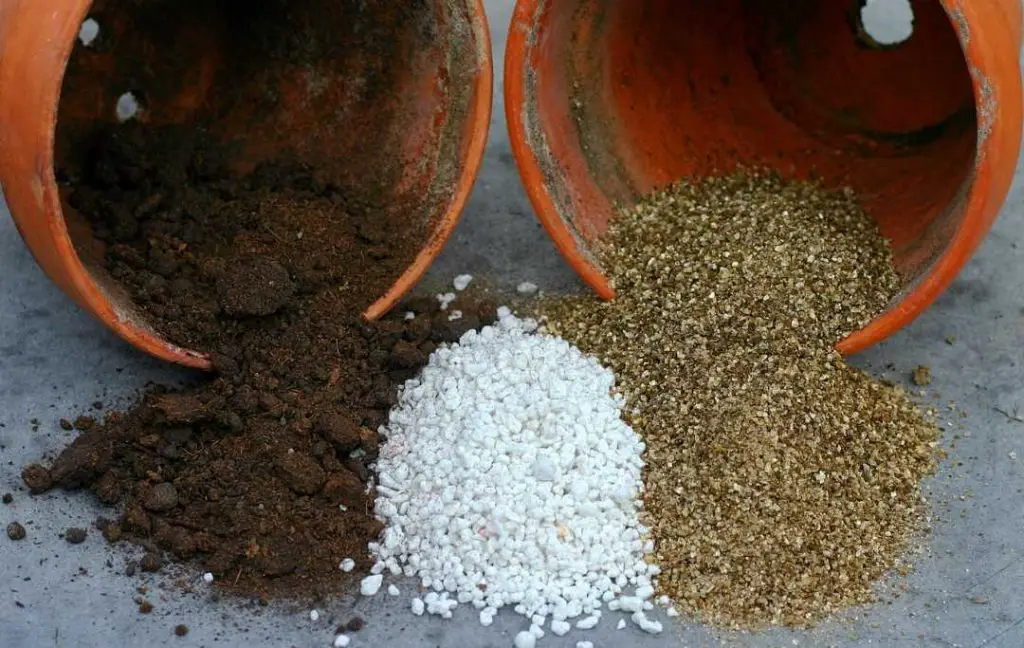
A high-quality potting mix is another requirement for your Indoor herbs. When you are buying soil, see the label on the packet that it is suitable for indoor plants or not.
For a heavy potting mix, you can add perlite or vermiculite because they will help you to hold more water. If you are living in a dry climate. One thing you should understand is that there is a difference between potting mix and potting soil. Potting mix are lighter and little white stones in it help in growing herbs.
Don’t use dirt from the ground in your indoor plants because this dirt will make breathing of your plants impossible. This has tiny bugs and parasites which is not good for your herbs.
You can also make your own potting mix by blending Coco Peat or Peat Moss, Perlite, and Coarse Sand. After the selection of the best soil, you should use fertilizer which may be seaweed and fish emulsion.
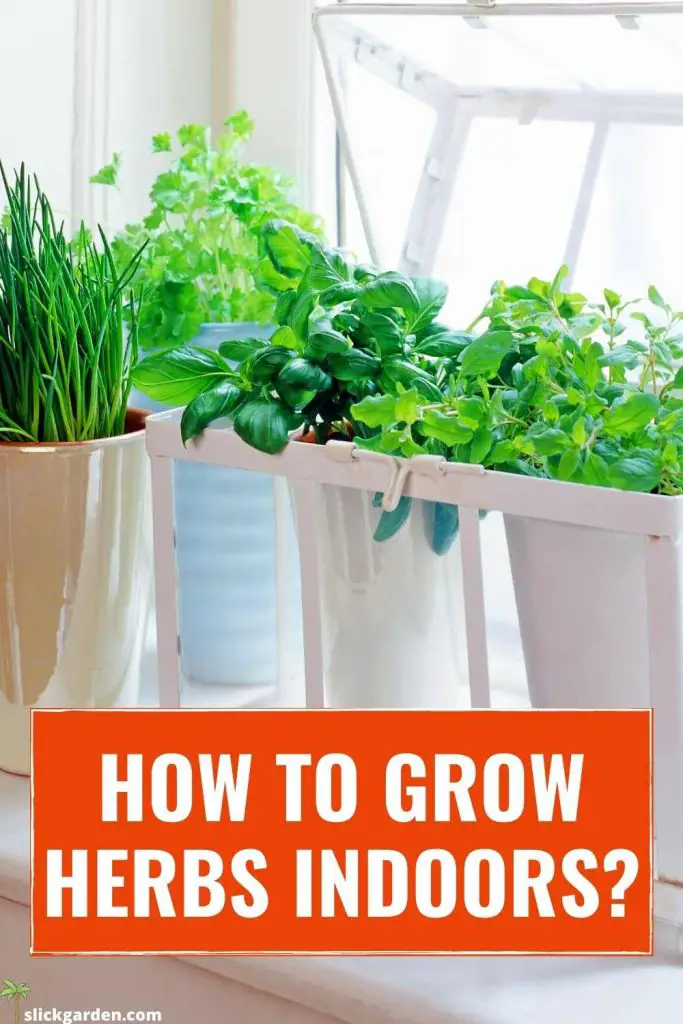
5- WATER
Herbs do not like too much water and you will be surprised to see how little water is required by a small herb. Your soil must be moist but not waterlogged. When you see your herbs are getting drying, water them.
You can test it by using your finger if the soil is dry out about two inches below the top then this is the time to give water to your plants. You should understand that the soil dries out from the top first, which means that plenty of moist soil is available at the bottom of the pot.
But it depends on the size of your pot. If the roots of your plants try to find water in the soil this will encourage a strong healthy root system.
Try to give water slowly to your plants, if you pour the water too quickly on the soil then it will run straight through the pot and at once go out from the drainage holes.
First, you should make a regular schedule of watering your herbs two to three times a week but this will depend on the moisture level of your home.
Related Article
6- PROVIDE GOOD AIR CIRCULATION
Without air, plants cannot grow well so make it possible that around your herbs there is good air circulation. If you grow herbs too close to each other they are not able to get maximum air, in this situation, there is a possibility of spreading diseases. It is better to change the positions of your herbs plants from time to time. Breathing is essential for your plants so don’t make the air stagnant around your plants.
